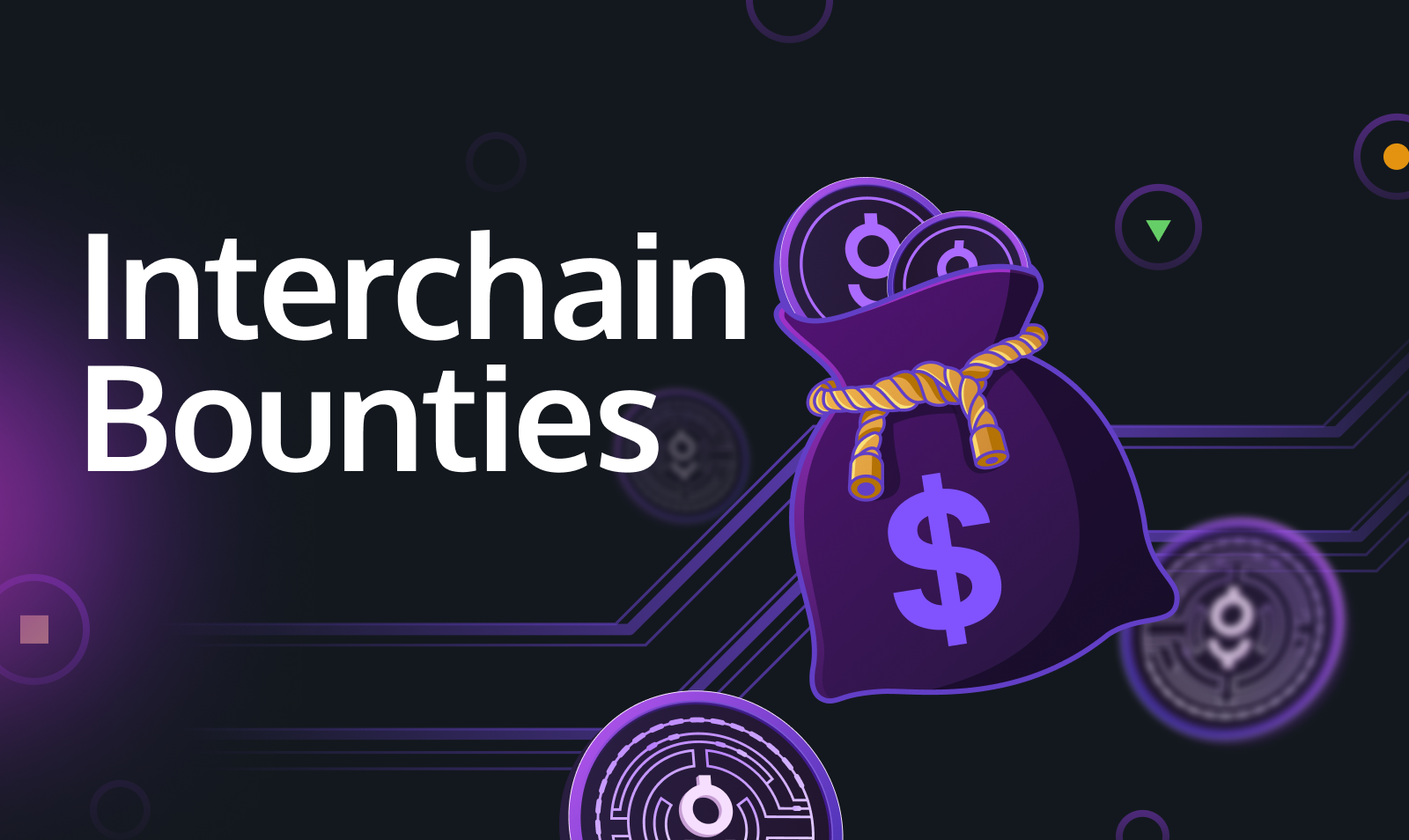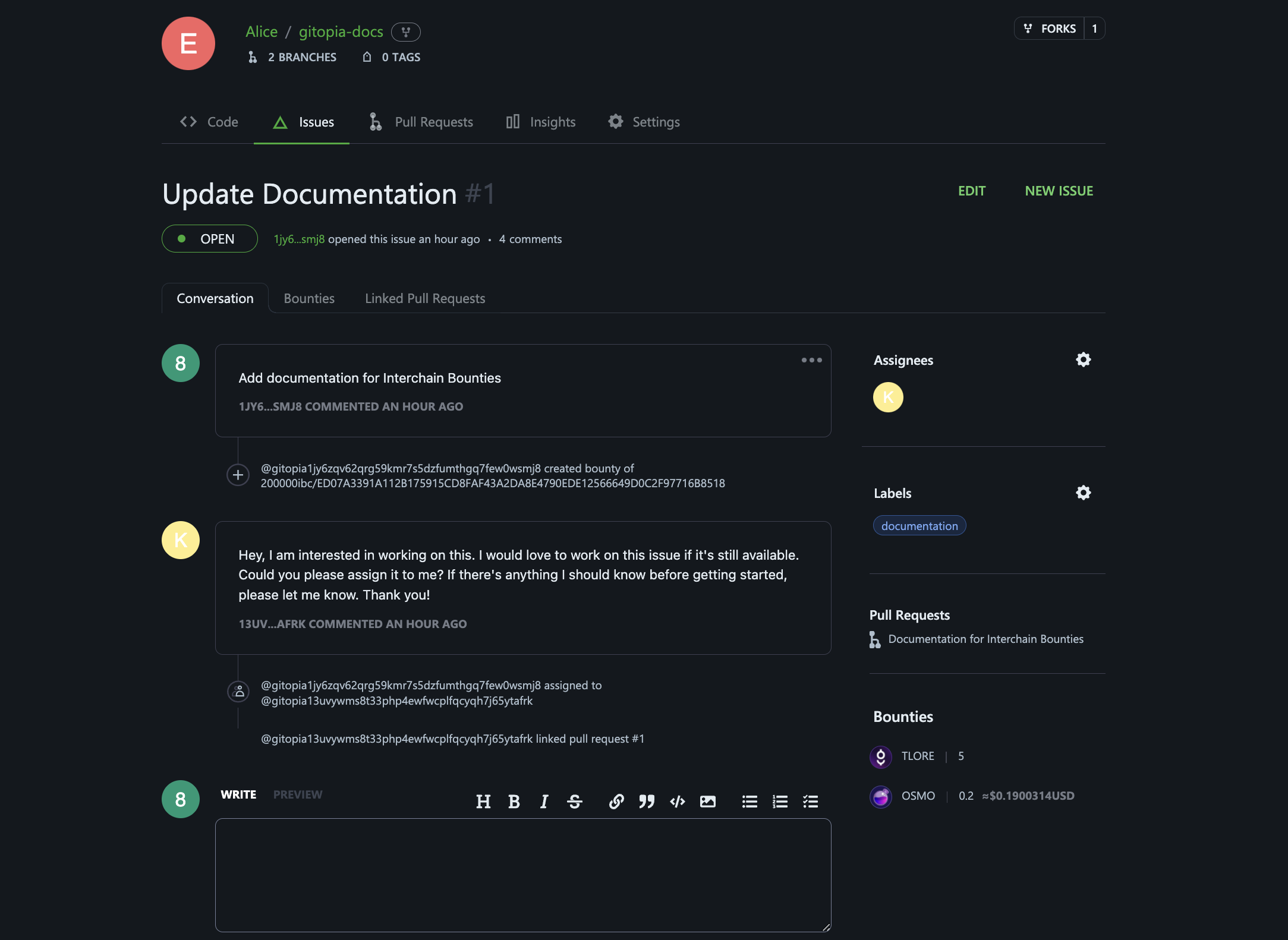Interchain Bounties

What are Interchain Bounties?
Interchain bounties are a great way for open-source projects to reward contributors for their work by attaching reward bounties to issues reported on the project's repositories on Gitopia. These bounties can be funded by the project or external organizations and are meant to motivate developers to work on the project and help improve it.
Using Interchain bounties, you can develop an interactive way to get your community involved in working on your project. This can increase the development bandwidth of your team by including more contributors to solve the issues your project is facing.
How do they work?
Users can create an issue, attach any IBC-compatible token as bounties to it, set a deadline, and invite contributions for a project. The project maintainer can then assign the issue to a contributor, and once the contributor Pull Request linking that issue is merged, the bounty is automatically transferred to the contributor, eliminating the need for escrow.

Key features and benefits of Interchain Bounties
Flexibility: Interchain Bounties can be assigned to any issue, which means that projects can use them to incentivize a wide range of contributions, from small bug fixes to major new features.
Interoperability: With bounties, Gitopia marks its entry into the interoperability space. You can assign rewards in any IBC-compatible asset. We are currently supporting LORE, OSMO, and ATOM to bootstrap the feature, but soon, we will work closely with the projects looking to include their tokens.
Expiry dates to the bounty: If the solution to the bounty is not finished in the given time, the bounty expires, and the fund reverts back to the bounty creator. This creates urgency in submitting PRs.
Reward on successful merge only: Your user can get rewarded only if their contribution follows the submission criteria and will only be rewarded after the Maintainer merges their pull request. This is automated. When a bounty is created, the tokens are locked in a unique address (each bounty has a separate address), and this bounty will be rewarded to the issue assignee only when the pull request is merged.
Use cases for Interchain Bounties
Interchain Bounties can be used in a variety of ways to help open-source projects engage and collaborate with their communities. Some potential use cases for Interchain Bounties include:
Incentivize existing issues in the project that needs work. This can be new features, bugs, UX improvements, or documentation.
Funding issues of importance in dependent projects to accelerate their work.
Hiring freelancers or other developers by assigning them specific tasks.
Running challenges and contests
Best practices
To get the most out of Gitopia Bounties, it's important to follow best practices when creating and assigning them:
Set appropriate bounty amounts: Make sure to set appropriate bounty amounts for the work you're requesting. If the amount is too low, you may not attract enough interest from contributors.
Communicate with contributors: Make sure to communicate with contributors who are working on bounties. This will help to ensure that the work is completed to your satisfaction and that any issues are addressed in a timely manner.
Be fair and transparent: Be fair and transparent when creating and assigning Gitopia Bounties. This will help to build trust and credibility within the community.